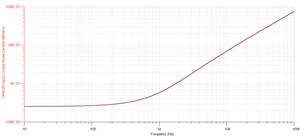Dear Specialists
My customer is considering OPA320.
He want to know the deviation of current noise.
According to the datasheet, It is 0.6 fA typ.
But max and min value is not described.
How much is it over temperature range(-40deg to 125deg)
What percent is apart from the typical value?
Best regards,
Shinichi



